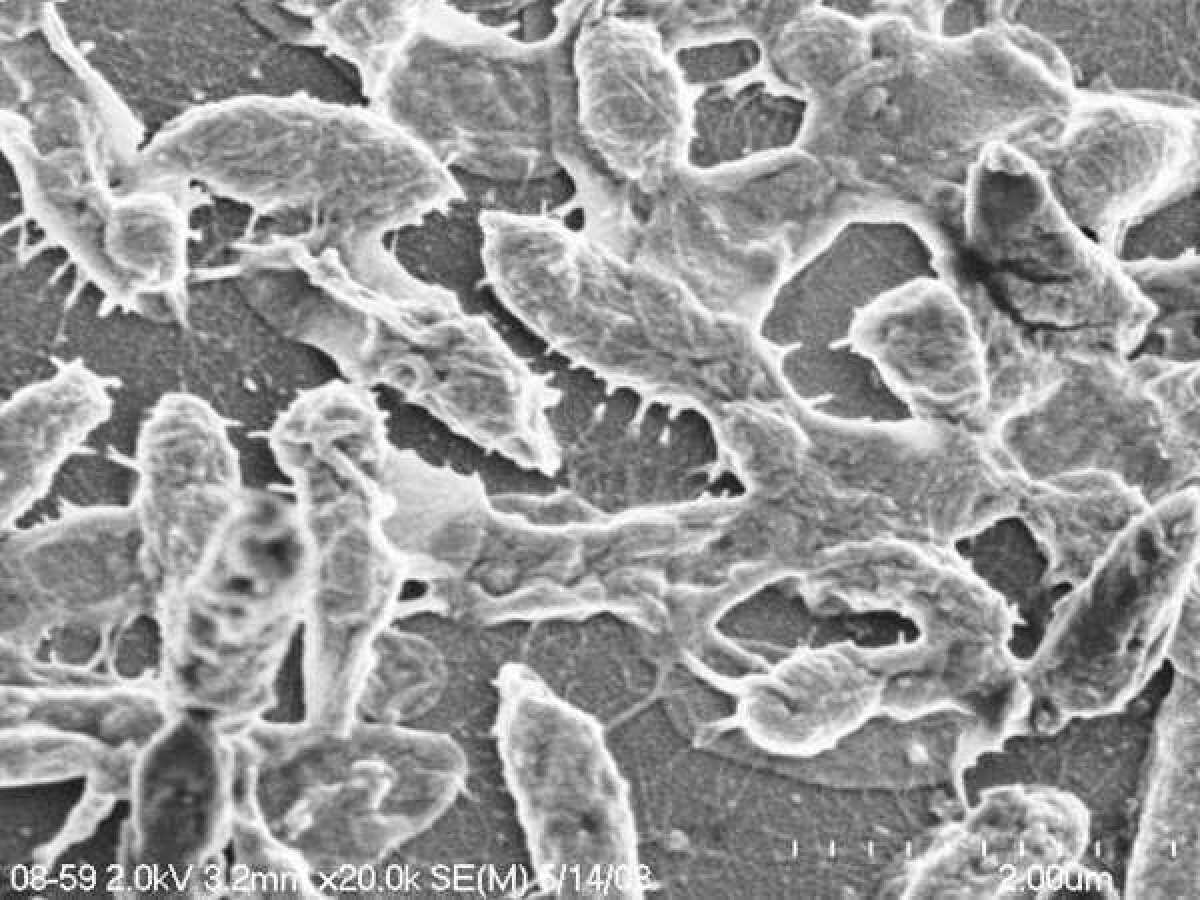Flesh-eating bacteria case: Could a simple drug have cured it?

- Share via
A Maryland microbiologist and international pathogen expert is on a one-woman mission to raise awareness about Aeromonas hydrophila, the waterborne bacteria believed to have caused the case of necrotizing faciitis -- better known as infection caused by flesh-eating bacteria -- that has proved devastating to a Georgia college student.
Aimee Copeland’s leg and part of her abdomen have been removed in a race to stay ahead of the disease. Her family’s blog says the 24-year-old is likely to lose her fingers, and possibly her remaining foot.
Necrotizing fasciitis is typically caused by an especially aggressive form of Group A Streptococcus, according to the federal Centers for Disease Control and Prevention‘s website. But not always. Copeland’s father, Andy Copeland, told the Atlanta Journal Constitution that Aeromonas hydrophila caused his daughter’s rare bacterial infection.
Microbiologist Amy Horneman did not treat Aimee Copeland and stressed that she cannot speak to the specifics of her case. But she said she hopes it will raise awareness about the dangers of the water-borne bacterium with the flowery sounding name.
“I call Aeromonas hydrophila ‘the Rodney Dangerfield of pathogens’ -- doctors just don’t think of it,” she said.
Horneman is chief of microbiology and molecular diagnostics at the Baltimore Medical Center of the Veterans Affairs Maryland Health Care System. She travels the world speaking at conferences about Aeromonas hydrophila, earning her the nickname “Aeromonas Amy.”
Infections caused by the bacterium are relatively easy to treat with common antibiotics -- but only if recognized in time. “There are certain drugs that just don’t work,” she said. “The best drugs to use are Ciprofloxacin and Bactrim (also SXT, Septra).”
Naturally occurring in water sources throughout the world, Aeromonas hydrophila bacterium has many positive contributions to the eco-system, she said.
But when it comes into contact with humans, it has the potential to wreak havoc. Most of the time, Aeromonas hydrophila causes diarrhea and simply runs its course, or causes an infection that needs routine medical treatment. In extremely rare cases, however, it can lead to necrotizing fasciitis -- unless its presence is recognized and treated.
Copeland was around water on the day she suffered the skin-breaking injury that left her body vulnerable. The 24-year-old was out for a day in the sun on May 21. She was kayaking along the Little Tallapoosa River west of Atlanta and hopped on a homemade zip line for a thrill ride. The line snapped, and Copeland fell, suffering a gash to her left calf.
“When I heard about the case, and I heard she fell in the water and got a deep cut... I thought, ‘It must be Aeromonas hydrophila,’” Horneman said.
A spokeswoman for the Joseph M. Still Burn Center at Doctors Hospital in Augusta, where Copeland is being treated, said she could not discuss Aimee Copeland’s condition, or its cause.
Horneman has spent 30 years studying Aeromonas hydrophila, making it the focus of her research and studies for her master’s and doctoral degrees. She attends international medical meetings to alert fellow medical experts about its dangers, and cures. She helped sequence the bacterium’s DNA in published 2006 medical papers, and has been tapped for decades to write an annual update on Aeromonas hydrophila that is used to bring medical doctors around the world up to speed on the latest data.
“My goal in life is to educate the public and doctors to think about Aeromonas hydrophila whenever they have a water-related wound ... like, if they cut their foot on a boat dock, or cut their foot on a shell,” she said.
Horneman stressed that there is no reason to panic should such an injury occur.
“I am not an alarmist,” she said, noting that she raised two sons and allowed them to participate in water-related sports and activities. “But I am very aggressive about treating any kind of cut, any kind of wound infection.”
She advises the public to seek medical attention for such wounds, but again stressed: “Not all wounds become necrotizing fasciitis.”
“It’s such an enigma,” she said of the bacterium that has been the focus of her career for decades.
“There’s 29 different species of Aeromonas. But only eight of those attack humans. The $64 million question is: What is it about those strains, those species, that only attack humans? That’s what I want to find out.”
ALSO:
Newsweek crowns Obama ‘First Gay President’
Fat attack: New Slurpee flavors slash calories, sugar
U.S. feels defriended as Facebook co-founder renounces citizenship
Join Rene Lynch on Google+, Facebook or Twitter
More to Read
Sign up for Essential California
The most important California stories and recommendations in your inbox every morning.
You may occasionally receive promotional content from the Los Angeles Times.














